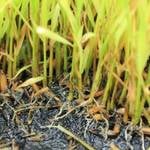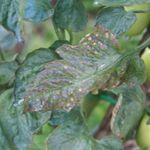
How to Grow Everlasting Sweetpea Seeds
Grow Guide #2475
Family: Fabaceae
Binomial name: Lathyrus latifolius
Life Cycle: Perennial
This 'How to Grow' guide details everything a home gardener needs to know to plant, grow and care for Everlasting sweetpeas (Lathyrus latifolius).
When to Sow Everlasting sweetpea Seeds
Everlasting sweetpea is a perennial plant that grows year round in most climates. Use the table below to identify the best time of year to sow everlasting sweetpea seeds in your climate.
| JAN | FEB | MAR | APR | MAY | JUN | JUL | AUG | SEP | OCT | NOV | DEC | |
|---|---|---|---|---|---|---|---|---|---|---|---|---|
| Cool | ||||||||||||
| Temperate | ||||||||||||
| Sub-Tropical | ||||||||||||
| Tropical | ||||||||||||
| Arid |
Preparation
Everlasting sweetpea plants are best grown in full sun or part shade. Choose a location that will receive at least 3 hours of full sun each day.
Everlasting sweetpea plants are perennial, meaning they live for several years. Choose a permanent position where plants can grow undisturbed by regular digging.
Everlasting sweetpea plants need a well drained soil enriched with plenty of organic matter. Prepare soil by weeding it thoroughly, digging it over to loosen it and adding aged animal manure or compost. Keep the area free of weeds until planting. Learn more about preparing soil for planting here.
Optional: Everlasting sweetpea plants grow best in soil that is alkaline. If soil pH is under 7, apply dolomite (calcium magnesium carbonate) or garden lime (calcium carbonate) in powder or liquid form at the recommended rate and water in well prior to planting. Lime increases the alkalinity (or pH) of soil, making nutrients more available to some plants. Learn more about preparing soil for planting here.
Everlasting sweetpea plants can be grown in containers. If possible choose a variety that’s recommended for container growing. Use a good quality potting mix and make sure your container is large enough for mature plants; a minimum of 40 litres is recommended for everlasting sweetpeas. During the growing season, keep in mind that container grown plants may need additional fertiliser to encourage healthy growth.
How to Sow Everlasting sweetpea Seeds
Optional: Soaking or scarifying seeds prior to planting may improve the speed and success of germination. To soak seeds, place them in room temperature water for 24 hours; seeds should swell noticeably. To scarify seeds, use a sharp knife to make a shallow nick in each seed's shell, or gently wear away a section of the husk using fine sandpaper or a nail file. Read more about seed treatments here.
Everlasting sweetpea seeds can be sown directly into the garden OR seedlings can be raised in trays or other containers and transplanted to the garden once established.
Sow Direct
- Sow seeds directly in the garden 25mm deep and 15cm apart.
- Keep soil moist but never wet or dry.
- Seeds should germinate in around 14-30 days at a soil temperature of 18-20°C.
- Young seedlings will need protection from pests, pets and weather until they are established.
Raise Seedlings
- Fill trays, punnets or jiffy pots with a good quality seed-raising mix, or use soil starter pellets.
- Sow seeds 25mm deep.
- Keep soil moist but never wet or dry.
- Seeds should germinate in around 14-30 days at a soil temperature of 18-20°C.
- Transplant seedlings to the garden once they have their first true leaves and are large enough to handle (usually 5-10cm tall).
- Plant out, spacing plants 15cm apart.
How to Grow Everlasting sweetpea
Everlasting sweetpea plants may need watering during the growing season. Water when the soil is dry about 5cm below the surface (test this by scratching away a little soil with your finger). Water deeply in the early morning or late afternoon. Avoid watering the leaves of plants to avoid fungal diseases. Learn more about watering here.
If soil was well prepared no extra fertiliser should be necessary. In poor soil or to give your plants an extra boost, application of a high-potassium fertiliser or one formulated for flowering plants can be beneficial:
- Apply slow release fertiliser at the recommended rate when transplanting or when seedlings are 5-10cm tall.
- Apply liquid fertiliser at the recommended rate and frequency while plants are fruiting or flowering.
Everlasting sweetpea requires a trellis or other strong support to grow on. Tie plants gently to the support using twine or plant ties. Make sure you have the support in place when you sow seed or transplant seedlings to avoid disturbing the plant’s roots later.
Optional: Pinch out the growing tips of everlasting sweetpea plants to encourage denser growth with stronger stems and more flowers. Using sharp secateurs or snips remove the top set of leaves, cutting just above a set of lower leaves.
Everlasting sweetpea plants should flower in approximately 195-210 days.
If growing everlasting sweetpeas for cut flowers, use sharp snips or secateurs to cut the longest stems possible, removing the lower leaves and placing the stems immediately in a clean bucket of water. Learn more about cutting and conditioning homegrown flowers here.
Deadhead everlasting sweetpea flowers regularly during the growing season. Using sharp secateurs or snips cut fading or dead flowers off just above a set of leaves. Removing old flowers regularly will encourage plants to produce more flowers. Learn more about deadheading flowering plants here.
Everlasting sweetpea plants may die back in cold weather. Cut plants back just above ground level in late autumn, or prune off dead foliage when new leaves emerge in spring.
Common Problems when Growing Everlasting sweetpeas
Like all plants, everlasting sweetpea is susceptible to some pests, diseases and other problems. Below is a list of the most common problems gardeners encounter when growing everlasting sweetpea plants:
 Aphids are small (2-4mm long) sap-sucking insects that congregate on the new shoots or the undersides of leaves. They can cause leaves to wilt or become discoloured, and also excrete honeydew which can attract ants and other insect pests. To manage aphids, remove them by spraying with a garden hose, apply a soap or alcohol spray, or encourage predatory insects to your garden. Read more about aphids here.
Aphids are small (2-4mm long) sap-sucking insects that congregate on the new shoots or the undersides of leaves. They can cause leaves to wilt or become discoloured, and also excrete honeydew which can attract ants and other insect pests. To manage aphids, remove them by spraying with a garden hose, apply a soap or alcohol spray, or encourage predatory insects to your garden. Read more about aphids here. Damping off is caused by a fungal growth that transfers from the soil to seeds or tender seedlings. Seeds may appear not to germinate, or young plants start to rot when they emerge from the soil and become soft and mushy at the base before dying. Use new potting mix if raising seedlings, do not water foliage and avoid waterlogged soil. Read more about damping off here.
Damping off is caused by a fungal growth that transfers from the soil to seeds or tender seedlings. Seeds may appear not to germinate, or young plants start to rot when they emerge from the soil and become soft and mushy at the base before dying. Use new potting mix if raising seedlings, do not water foliage and avoid waterlogged soil. Read more about damping off here. Downy mildew is a fungal disease that causes yellow to grey-brown patches on leaves, especially the undersides. Water plants at soil level (not on the leaves), remove and destroy affected leaves and do not overcrowd plants to ensure adequate air flow. If problems persist, spray with a homemade milk spray or fungicide.
Downy mildew is a fungal disease that causes yellow to grey-brown patches on leaves, especially the undersides. Water plants at soil level (not on the leaves), remove and destroy affected leaves and do not overcrowd plants to ensure adequate air flow. If problems persist, spray with a homemade milk spray or fungicide. Slugs and snails are molluscs that feed on tender leaves and shoots, mostly at night, leaving slimy trails behind them. Control them by removing their hiding places, keeping free range poultry, collecting them by torchlight or by placing traps. Read more about slugs and snails here.
Slugs and snails are molluscs that feed on tender leaves and shoots, mostly at night, leaving slimy trails behind them. Control them by removing their hiding places, keeping free range poultry, collecting them by torchlight or by placing traps. Read more about slugs and snails here.


.png)




